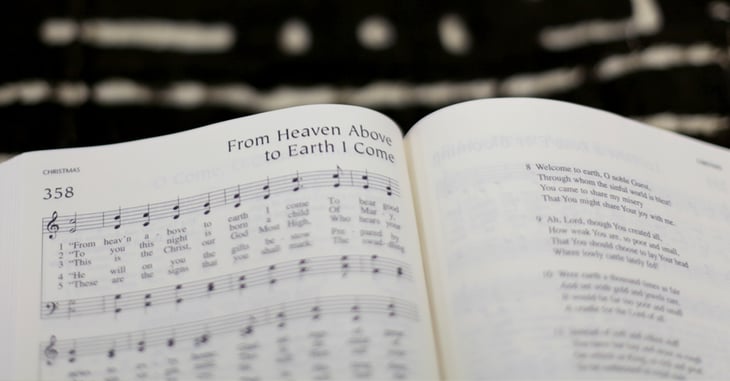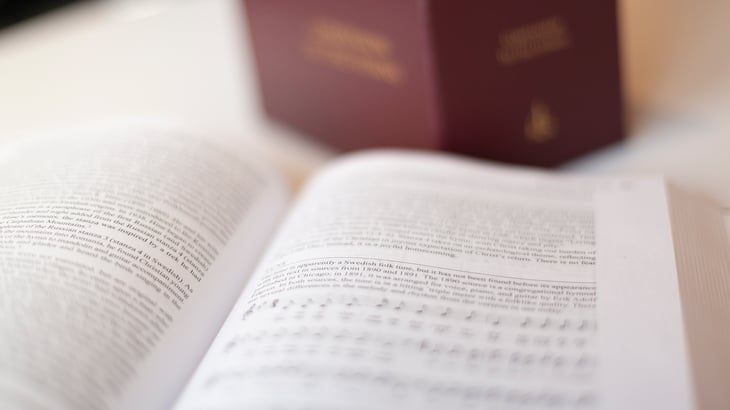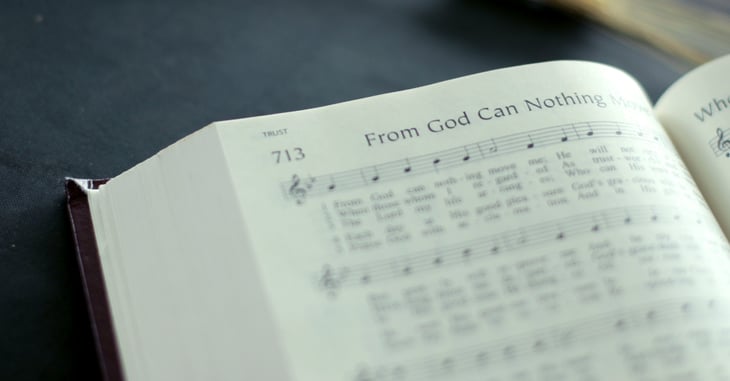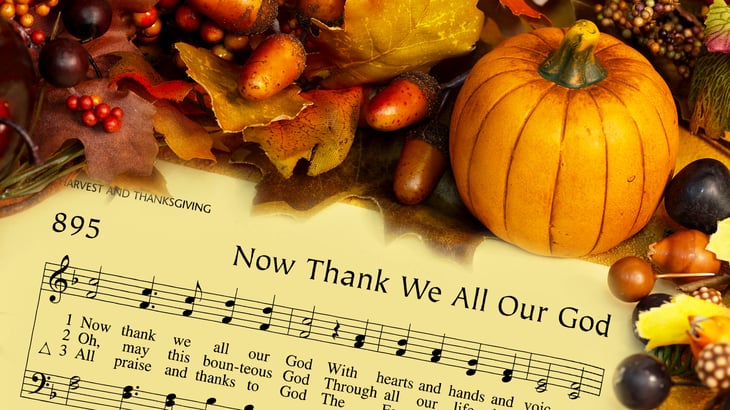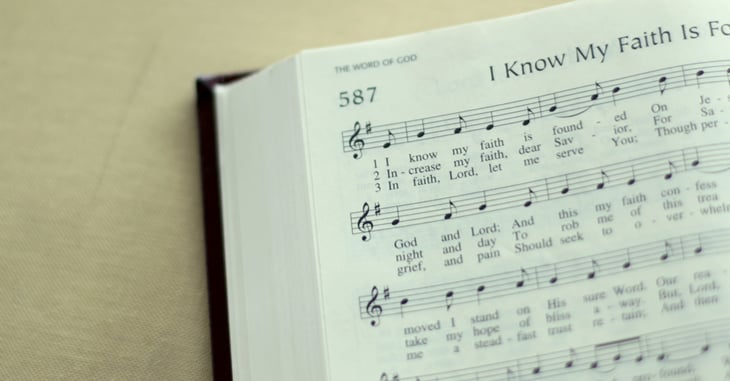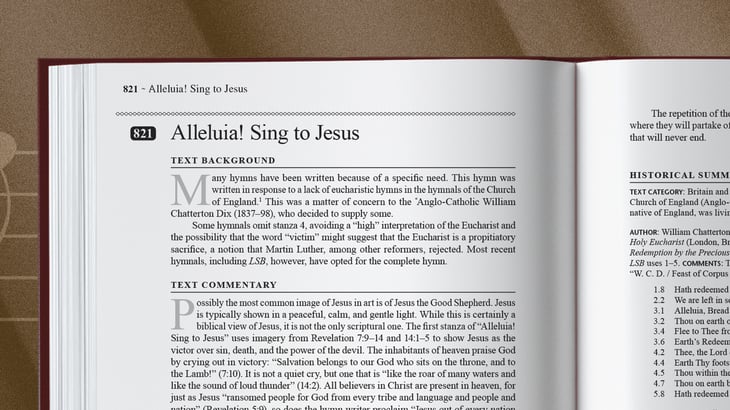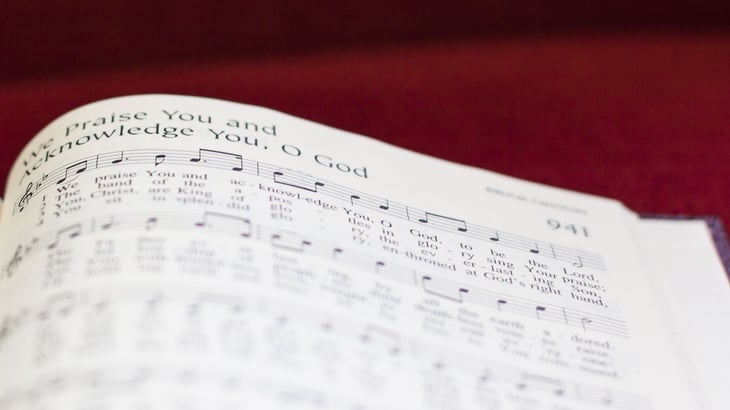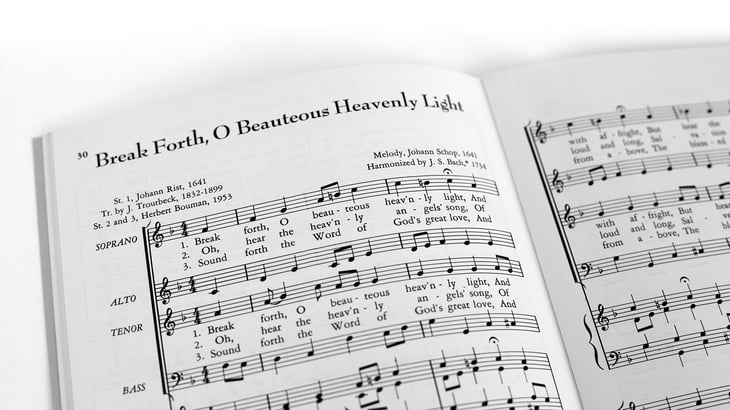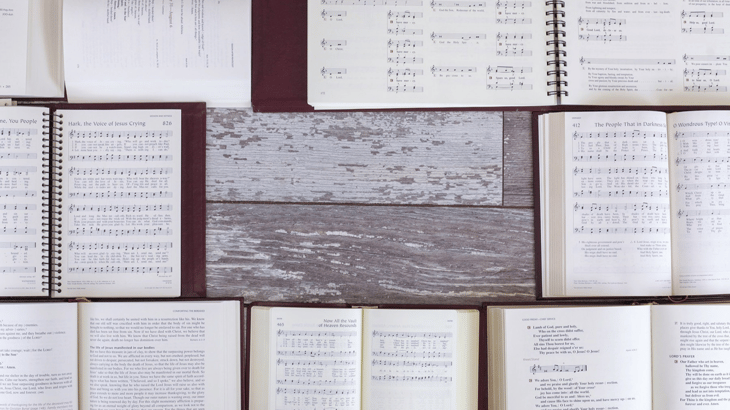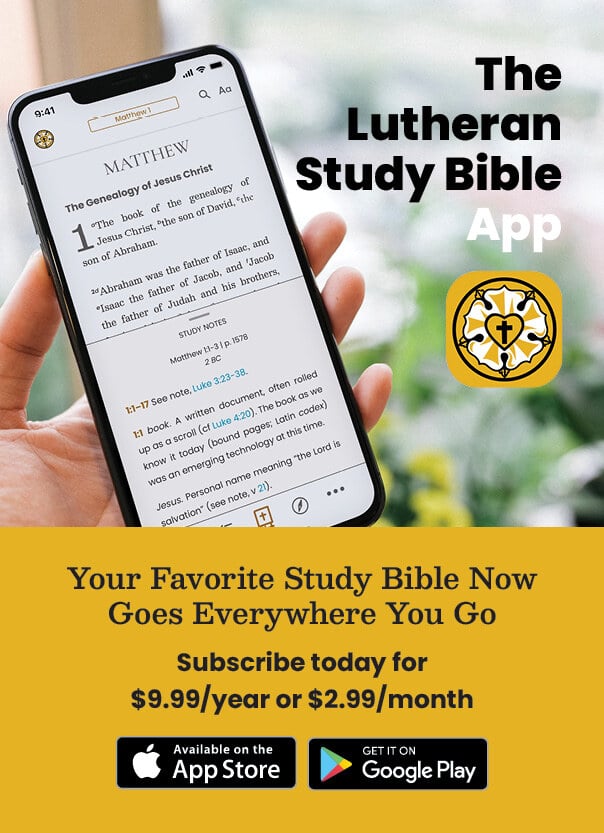Hymn of the Month: From Heaven Above to Earth I Come
The Hymn of the Month is “From Heaven Above to Earth I Come” (LSB 358), set to the tune VOM HIMMEL HOCH. The text was written by Martin Luther, and it was translated from German to English by Catherine Winkworth, one of the most prominent female hymn translators in history.
Six Myths about Christmas Hymns
As we wait for the arrival of the Savior, here is a guest post from Rev. Dr. Jon D. Vieker, one of the three general editors of Lutheran Service Book: Companion to the Hymns, which originally appeared in the December 2019 edition of The Lutheran Witness.
Hymn of the Month: From God Can Nothing Move Me
The Hymn of Month is “From God Can Nothing Move Me” (LSB 713). It is set to the tune VON GOTT WILL ICH NICHT LASSEN. This is probably the most well-known hymn of Ludwig Helmbold, a German philosophy professor and poet of Lutheran hymns. It was written for friends fleeing the 1563 plague in Erfurt to comfort them on their journey. Johann Sebastian Bach used several of Helmbold’s hymn texts in his cantatas, and stanza five of Von Gott Will Ich Nicht Lassen appears in Bach’s O heilges Geist-und Wasserbad (O holy bath of Spirit and Water).
Three Thanksgiving Hymn Histories
November is a time of thanksgiving. We reflect and give thanks for everything that God has provided for us physically, spiritually, and emotionally. During this month, many churches, perhaps even your church, sing hymns of thanksgiving each Sunday. If you’re curious about the backstory and historical context of thanksgiving hymns (or any other hymn!), LSB: Companion to the Hymns is a great resource. To illustrate, we’ve picked three of these hymns and their histories to share in-depth.
Hymn of the Month: I Know My Faith Is Founded
The Hymn of the Month is “I Know My Faith Is Founded” (LSB 587). The German text was written by Erdmann Neumeister, who was a pastor, organist, and schoolmaster in the seventeenth and eighteenth centuries. In 1941, the hymn was translated into English by The Lutheran Hymnal.
5 Fun Facts from the new LSB: Companion to the Hymns
Have you ever wanted to know more about the history of the hymns in Lutheran Service Book? Do you ever wonder what the lives of those who wrote our hymns were like? Good news—we have a book for that. Everyone at Concordia Publishing House is incredibly excited to announce the launch of Lutheran Service Book: Companion to the Hymns. This comprehensive hymn companion is rich with compelling facts—many newly discovered through extensive research of original sources in libraries all over the world. We’ve picked our top five for you to check out today.
We Praise You and Acknowledge You, O God: Te Deum Hymn Devotion
This post is an excerpt adapted from Praise & Honor by Timothy J. Shoup.
Imitation in Music
Originality. A quick Google search of the word provides such synonyms as inventiveness, creativity, novelty, newness, individuality, and even the phrase break with tradition. Originality is a quality highly desired in today’s world. Just look at the trendy Instagram posts of fashion and modern art.
Hymns as Poems: What Do They Mean without Music?
I was recently gifted a book of the poetry of George Herbert. Herbert was a seventeenth-century aristocrat-turned-deacon in the Church of England whose English-language poems were published posthumously. Herbert’s almost exclusively Christian poetry is a beautiful expression of faith. Herbert captures the wonder of God’s love for us, the enormity of Christ’s sacrifice on the cross, and the joy of our salvation again and again. In his work, in fact, his poems remind me of our hymnal and the poetic expressions of faith captured therein. Reading his poetry inspired me to think of hymns as poems as well.
